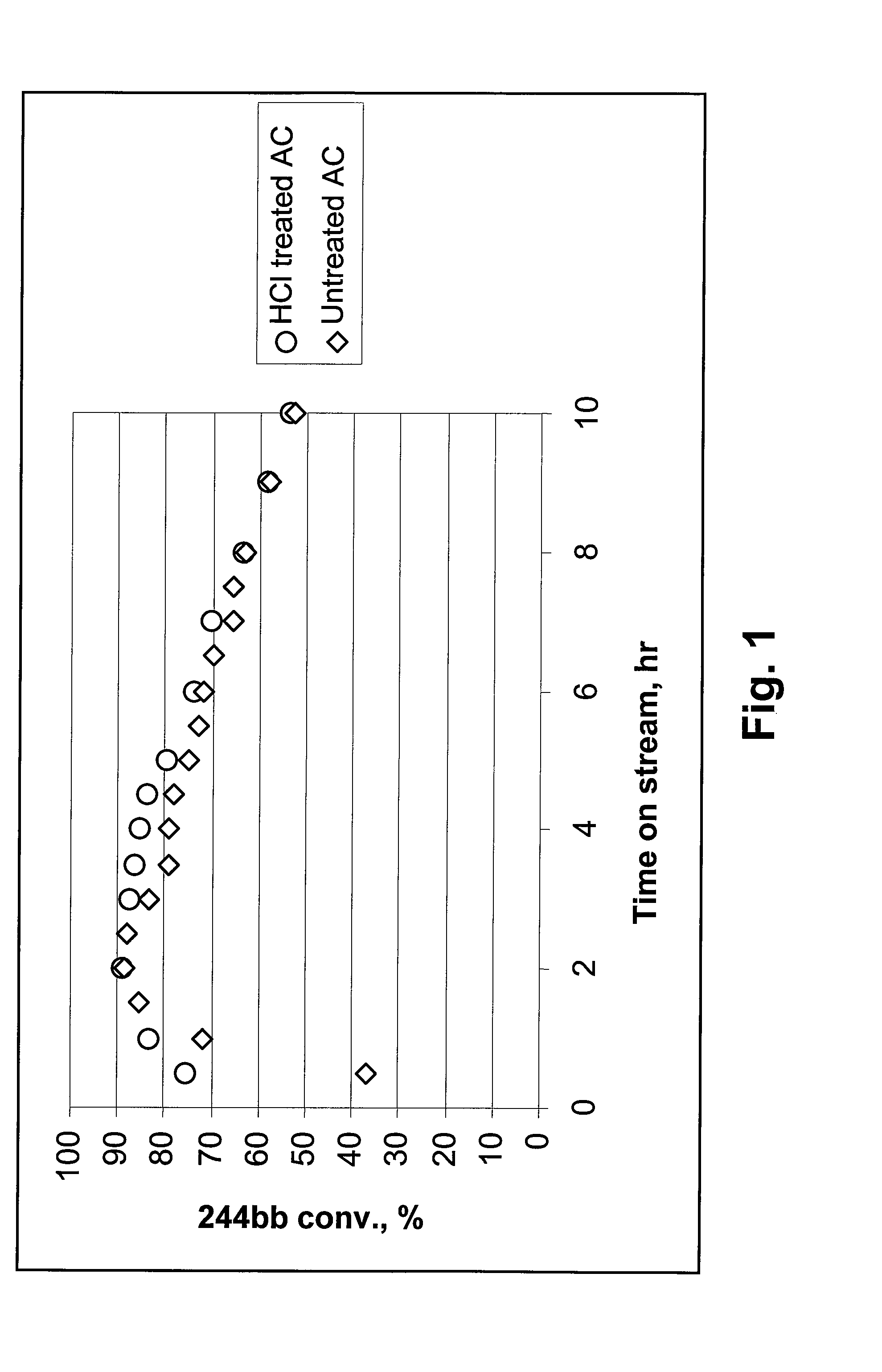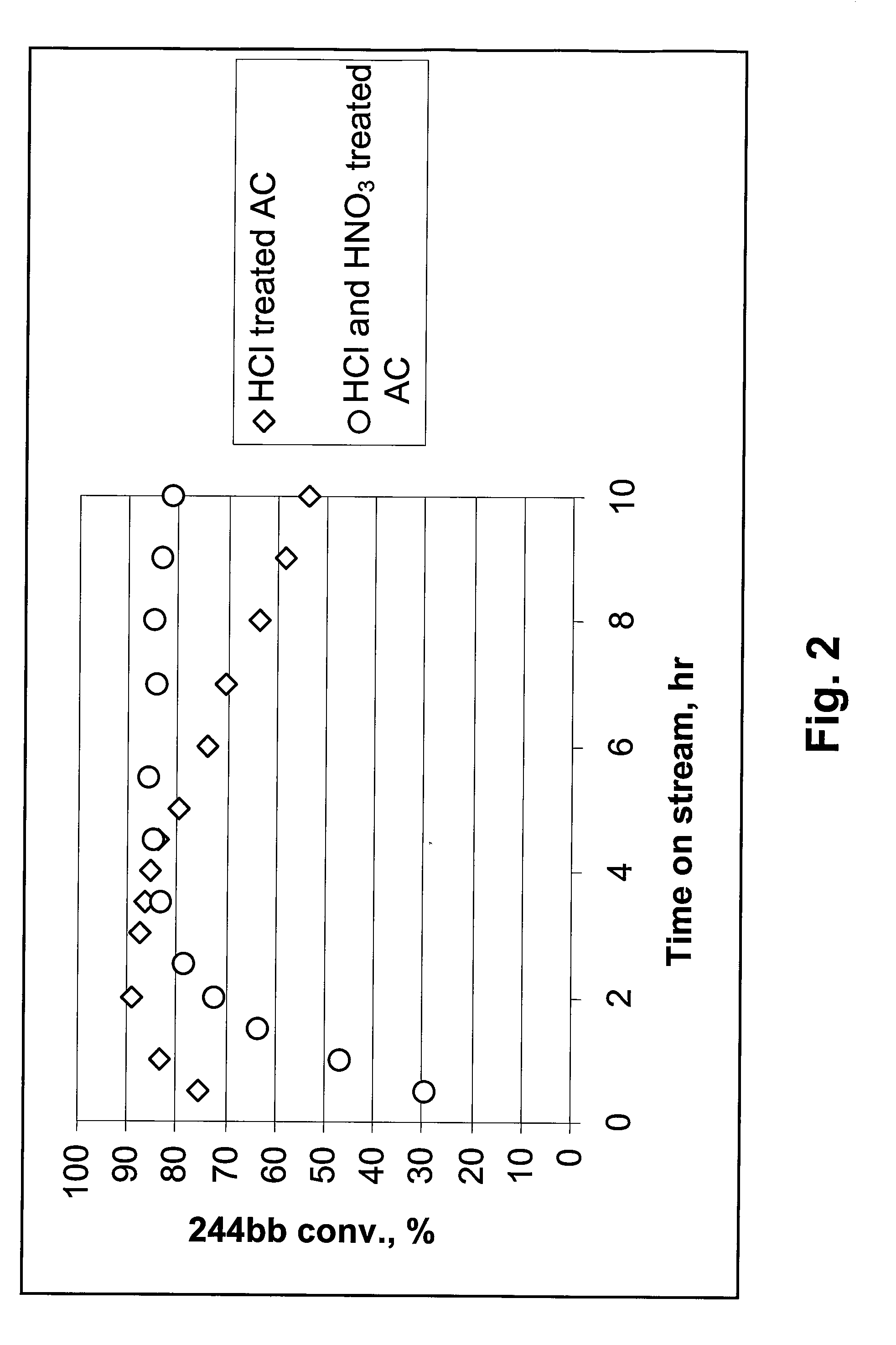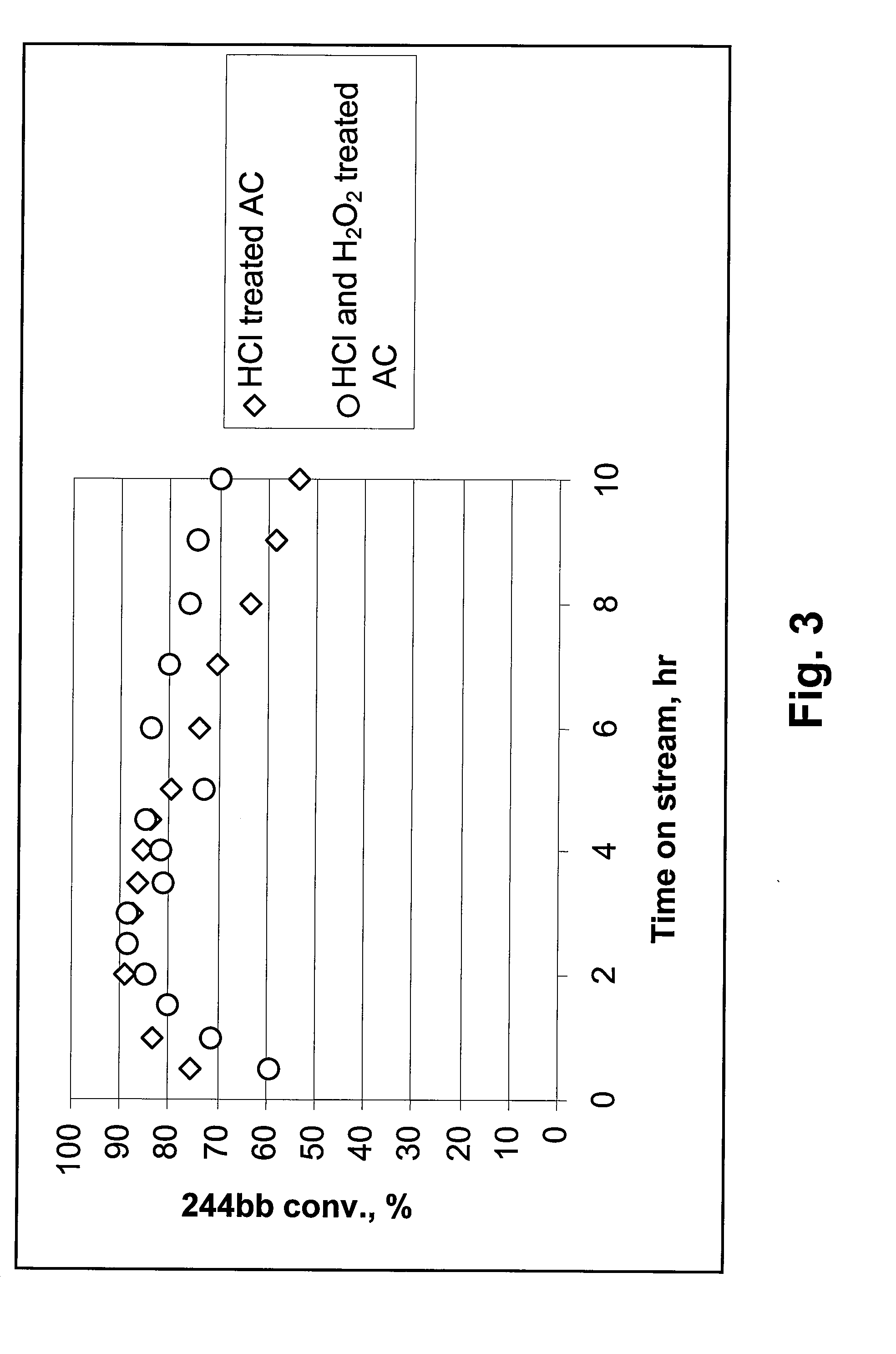Dehydrochlorination of hydrochlorofluorocarbons using pre-treated activated carbon catalysts
a technology of activated carbon and hydrochlorofluorocarbons, which is applied in the preparation of halogenated hydrocarbons, physical/chemical process catalysts, hydrogen halide split-off, etc., can solve the problems of reducing the conversion rate of hcfcs and prone to deactivation of carbon
- Summary
- Abstract
- Description
- Claims
- Application Information
AI Technical Summary
Benefits of technology
Problems solved by technology
Method used
Image
Examples
example 1
244bb Dehydrochlorination Over Untreated and HCl-Treated ACs
[0019]In Example 1, untreated and HCl-treated activated carbons (ACs) were used as dehydrochlorination catalysts. 20 cc of catalyst granules was used. A mixture of 92.7% of 244bb / 6.5% of 1233xf was passed through a bed of each of the AC catalysts at a rate of 6 g / h. 1233xf is an intermediate product formed during the fluorination of CCl2=CClCH2Cl, and is used as raw material for producing 244bb, as described in the '592 application. For this reason, streams of 244bb often comprise some amount of 1233xf. The temperatures at the bottom of the catalyst bed and at the top of catalyst bed were recorded and reported. As shown in FIG. 1, which shows data at 350-385° C., the stability of AC was slightly improved after treatment with HCl.
example 2
244bb Dehydrochlorination Over HCl- and HCl & HNO3-Treated Activated Carbons
[0020]In Example 2, AC pretreated with HCl, and AC pre-treated with both HCl & HNO3, according to the methods described above, were used as dehydrochlorination catalysts. 20 cc of catalyst granules was used. A mixture of 92.7% of 244bb / 6.5% of 1233xf was passed through a bed of each of the AC catalysts at a rate of 6 g / h. The temperatures at the bottom of the catalyst bed and at the top of catalyst bed were recorded and reported. As shown in FIG. 2, at 350-385° C., compared to the AC pre-treated with only HCl, the HCl & HNO3 pre-treated AC showed much higher stability. Over the latter the conversion of 244bb was still above 80% after 10 hours on stream, while over the former it was already below 55% after 10 hours on stream. This result suggests oxidation treatment in liquid phase with HNO3, particularly when used in conjunction with the pre-treatment of HCl, can greatly improve the stability of AC.
example 3
244bb Dehydrochlorination Over HCl- and HCl & H2O2-Treated Activated Carbons
[0021]In Example 3, AC pre-treated with HCl, and AC pre-treated with both HCl & H2O2, according to the methods described above, were used as dehydrochlorination catalysts. 20 cc of catalyst granules was used. A mixture of 92.7% of 244bb / 6.5% of 1233xf was passed through a bed of each of the AC catalysts at a rate of 6 g / h. The temperatures at the bottom of the catalyst bed and at the top of catalyst bed were recorded and reported. As shown in FIG. 3, at 350-385° C., compared to the AC pre-treated with HCl only, the AC pre-treated with both HCl & H2O2 exhibited higher stability. The latter exhibited a rate of conversion of 244bb of about 70% after 10 hours on stream, while the former exhibited a rate of below about 55% after 10 hours on stream. This result suggests that pre-treatment of the AC in liquid phase with H2O2, after pre-treatment with HCl, can improve the stability of the AC over that which is only ...
PUM
| Property | Measurement | Unit |
|---|---|---|
| temperature | aaaaa | aaaaa |
| temperature | aaaaa | aaaaa |
| temperature | aaaaa | aaaaa |
Abstract
Description
Claims
Application Information
 Login to View More
Login to View More - R&D
- Intellectual Property
- Life Sciences
- Materials
- Tech Scout
- Unparalleled Data Quality
- Higher Quality Content
- 60% Fewer Hallucinations
Browse by: Latest US Patents, China's latest patents, Technical Efficacy Thesaurus, Application Domain, Technology Topic, Popular Technical Reports.
© 2025 PatSnap. All rights reserved.Legal|Privacy policy|Modern Slavery Act Transparency Statement|Sitemap|About US| Contact US: help@patsnap.com



